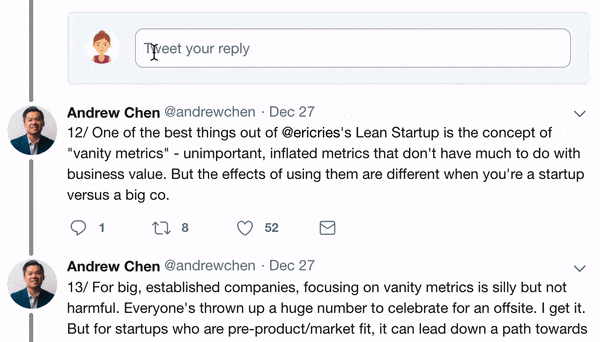
1/Trade Planning Part 4 - Edge
Reminder, here's the 4 parts of any trade:
edge -> setup -> trade plan -> execution.
If you missed the other sections, check out my history.
Reminder, here's the 4 parts of any trade:
edge -> setup -> trade plan -> execution.
If you missed the other sections, check out my history.
2/Edge is the opportunity you have identified in the market that provides profit. It is the “alpha” everyone talks about. The term alpha comes from the expected return curve on a log scale chart where the price is the y-axis, your metric is the x-axis.
3/I’m sure you remember the simple formula Y = bx + a… beta is the b, alpha is the a, so if the a is positive (the y intercept), that means even if x doesn’t do anything, you make money. Edge is the highest order of trading, so it is tough to recognize if your thesis has edge.
4/Sometimes your edge can be fundamental. Say you work in shipping, and you recognize that orders for goods are going up. Make a trade because you know your industry, and even though stock prices are down, you know they will go up from what you see.
5/Fundamental edge is typically obtained through pure hustle. Maybe you research something so thoroughly that you just know more. Maybe it has something to do with your job. One way or another, you know the most, so you can invest the best.
6/Your edge could be mechanical, as is the case for most vol traders. That means you know how markets work, can figure out the causal variables, draw a correlation, figure out historically what happens in those conditions... these are the sources of edge.
7/You cannot have excess edge just like you cannot have an excess of love. But you must recognize when your edge exists. Finding a correlation doesn't mean anything without context! If you don't know why something is happening, figure it out before you claim edge.
8/Another thing about edge, it tends to disappear. If your setups are good, your trade plans accurately reflect the setup, and your executions work perfectly, yet on the aggregate you still lose. You might come to the realization that your edge doesn’t exist, even if it used to.
9/This is where I give my pitch on a trading journal. That way you can see how your trading is doing on the aggregate. Organize it like above, edge, setup, trade plan, execution, and be honest with your feelings about how the trade went. Log as much as you can.
10/Be honest with yourself wrt edge. Don't draw correlations that are "fit" to your thesis and claim edge. Don't be too brazen with your edge because the last thing you want to do is lose the edge through others mimicking it, which implicitly loses it. Edge is never forever.
11/Finally, manage your risk. You may have edge, but unless your edge is an unseen arbitrage you can lose on a trade. When you put on a trade, assume you will lose. Like a lottery ticket, it is fun to spend the money you are about to win, but it is a sure way to ruin.
12/All of these trade planning threads were admittedly general. Unroll them, save them, they are a fantastic framework that served me well, and general enough for all traders to get something out of them. I hope you did. Now my threads can focus more on vol stuff. :)
• • •
Missing some Tweet in this thread? You can try to
force a refresh




